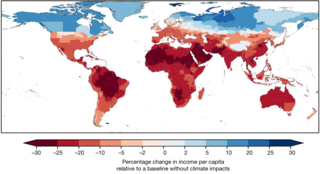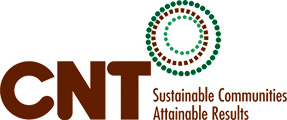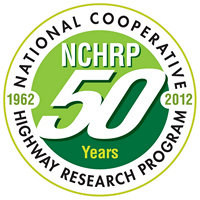Related Research Articles

Transport economics is a branch of economics founded in 1959 by American economist John R. Meyer that deals with the allocation of resources within the transport sector. It has strong links to civil engineering. Transport economics differs from some other branches of economics in that the assumption of a spaceless, instantaneous economy does not hold. People and goods flow over networks at certain speeds. Demands peak. Advance ticket purchase is often induced by lower fares. The networks themselves may or may not be competitive. A single trip may require the bundling of services provided by several firms, agencies and modes.
Cost–benefit analysis (CBA), sometimes also called benefit–cost analysis, is a systematic approach to estimating the strengths and weaknesses of alternatives. It is used to determine options which provide the best approach to achieving benefits while preserving savings in, for example, transactions, activities, and functional business requirements. A CBA may be used to compare completed or potential courses of action, and to estimate or evaluate the value against the cost of a decision, project, or policy. It is commonly used to evaluate business or policy decisions, commercial transactions, and project investments. For example, the U.S. Securities and Exchange Commission must conduct cost-benefit analyses before instituting regulations or deregulations.
The American Association of State Highway and Transportation Officials (AASHTO) is a standards setting body which publishes specifications, test protocols, and guidelines that are used in highway design and construction throughout the United States. Despite its name, the association represents not only highways but air, rail, water, and public transportation as well.

An industrial park, also known as industrial estate or trading estate, is an area zoned and planned for the purpose of industrial development. An industrial park can be thought of as a more heavyweight version of a business park or office park, which has offices and light industry, rather than heavy industry. Industrial parks are notable for being relatively simple to build; they often feature speedily erected single-space steel sheds, occasionally in bright colours.

In economics, an input–output model is a quantitative economic model that represents the interdependencies between different sectors of a national economy or different regional economies. Wassily Leontief (1906–1999) is credited with developing this type of analysis and earned the Nobel Prize in Economics for his development of this model.
In energy economics and ecological energetics, energy return on investment (EROI), also sometimes called energy returned on energy invested (ERoEI), is the ratio of the amount of usable energy delivered from a particular energy resource to the amount of exergy used to obtain that energy resource.
A feasibility study is an assessment of the practicality of a project or system. A feasibility study aims to objectively and rationally uncover the strengths and weaknesses of an existing business or proposed venture, opportunities and threats present in the natural environment, the resources required to carry through, and ultimately the prospects for success. In its simplest terms, the two criteria to judge feasibility are cost required and value to be attained.

An economic analysis of climate change uses economic tools and models to calculate the magnitude and distribution of damages caused by climate change. It can also give guidance for the best policies for mitigation and adaptation to climate change from an economic perspective. There are many economic models and frameworks. For example, in a cost–benefit analysis, the trade offs between climate change impacts, adaptation, and mitigation are made explicit. For this kind of analysis, integrated assessment models (IAMs) are useful. Those models link main features of society and economy with the biosphere and atmosphere into one modelling framework. The total economic impacts from climate change are difficult to estimate. In general, they increase the more the global surface temperature increases.

The Center for Neighborhood Technology (CNT) is a non-profit organization, headquartered in Chicago, Illinois, which is committed to sustainable development and urban communities.

A megaproject is an extremely large-scale construction and investment project. A more general definition is "Megaprojects are temporary endeavours characterised by: large investment commitment, vast complexity, and long-lasting impact on the economy, the environment, and society".
Context-sensitive solutions (CSS) is a theoretical and practical approach to transportation decision-making and design that takes into consideration the communities and lands through which streets, roads, and highways pass. The term is closely related to but distinguishable from context-sensitive design in that it asserts that all decisions in transportation planning, project development, operations, and maintenance should be responsive to the context in which these activities occur, not simply the design process. CSS seeks to balance the need to move vehicles efficiently and safely with other desirable outcomes, including historic preservation, environmental sustainability, and the creation of vital public spaces. In transit projects, CSS generally refers to context sensitive planning, design, and development around transit stations, also known as transit-oriented development.
The New Approach to Appraisal was the name given to a multi-criteria decision framework used to appraise transport projects and proposals in the United Kingdom. NATA was built on the well established cost–benefit analysis and environmental impact assessment techniques for assessing transport projects and proposals.

The Highway Capacity Manual (HCM) is a publication of the Transportation Research Board (TRB) of the National Academies of Sciences, Engineering, and Medicine in the United States. It contains concepts, guidelines, and computational procedures for computing the capacity and quality of service of various highway facilities, including freeways, highways, arterial roads, roundabouts, signalized and unsignalized intersections, interchanges, rural highways, and the effects of mass transit, pedestrians, and bicycles on the performance of these systems.
The Puget Sound Regional Council (PSRC) is a metropolitan planning organization that develops policies and makes decisions about transportation planning, economic development, and growth management throughout the four-county Seattle metropolitan area surrounding Puget Sound. It is a forum for cities, towns, counties, transit agencies, port districts, Native American tribes, and state agencies to address regional issues.

An economic impact analysis (EIA) examines the effect of an event on the economy in a specified area, ranging from a single neighborhood to the entire globe. It usually measures changes in business revenue, business profits, personal wages, and/or jobs. The economic event analyzed can include implementation of a new policy or project, or may simply be the presence of a business or organization. An economic impact analysis is commonly conducted when there is public concern about the potential impacts of a proposed project or policy.

The International Economic Development Council (IEDC) is a non-profit membership organization serving economic developers. With more than 4,500 members, IEDC is the largest national and global organization of its kind.

The National Cooperative Highway Research Program (NCHRP) conducts research in problem areas that affect highway planning, design, construction, operation, and maintenance in the United States. Spearheaded by the Transportation Research Board (TRB), part of the National Academies of Sciences Engineering and Medicine, it is jointly supported by federal agencies, state departments of transportation (DOTs), and other nonprofit organizations.
Infrastructure-based economic development, also called infrastructure-driven development, combines key policy characteristics inherited from the Rooseveltian progressive tradition and neo-Keynesian economics in the United States, France's Gaullist and neo-Colbertist indicative planning, Scandinavian social democracy as well as Singaporean and Chinese state capitalism: it holds that a substantial proportion of a nation’s resources must be systematically directed towards long term assets such as transportation, energy and social infrastructure in the name of long term economic efficiency and social equity.
Farmers' markets are markets in which producers sell directly to consumers. While farmers' markets do not have a measurable impact on the United States economy as a whole, many studies have found that farmers' markets impact state and municipal economies as well as vendors, local businesses, and consumers. These impacts are measured using the IMPLAN Input-Output Model and the Sticky Economic Evaluation Device (SEED), in addition to other methods. The economic impacts that are most frequently measured include effects on the revenue and income of local growers and local businesses, the effects on job creation, and the effects on other sectors of state and local economies. Some obstacles that may reduce impact or create negative economic effects include over-saturation, socioeconomic barriers, the opportunity cost of farmers' markets, and the projected unsustainable growth of farmers' markets in the United States.

In addition to the direct reduction in travel times the HSR project will produce, there are also economic and environmental impacts of the high-speed rail system. These were also specifically noted in Proposition 1A at the time the project sought authorization from the voters of the state in 2008. The anticipated benefits apply both generally to the state overall, as well as to the regions the train will pass through, and to the areas immediately around the train stations.
References
- ↑ "Archived copy" (PDF). Archived from the original (PDF) on 2008-08-20. Retrieved 2008-10-09.
{{cite web}}: CS1 maint: archived copy as title (link) A Guide to State DOT Consideration of Economic Development Potential in Planning, ICF Consulting for the AASHTO Standing Committee on Planning, NCHRP 8-36-60, March 2007 - ↑ "Archived copy". Archived from the original on 2011-07-28. Retrieved 2008-10-09.
{{cite web}}: CS1 maint: archived copy as title (link) Best Practices in Using Programmatic Strategies in Statewide Transportation Plans, Wilbur Smith Associates for AASHTO, NCHRP Project 8-36-67, 2007 - ↑ "Archived copy" (PDF). Archived from the original (PDF) on 2006-01-14. Retrieved 2008-10-09.
{{cite web}}: CS1 maint: archived copy as title (link) Return on Investment on Freight Rail Capacity Improvement, Cambridge Systematics for AASHTO, NCHRP Project 8-36-43, 2005 - ↑ "Guide to Quantifying the Economic Impacts of Federal Investment in Large-Scale Freight Transportation Projects. Section 10: Toolbox". Archived from the original on 2008-09-21. Retrieved 2008-10-08. Guide to Quantifying the Economic Impacts of Freight Projects, US Department of Transportation, 2006
- ↑ The Cost of Highway Limitations and Traffic Delay to Oregon's Economy, Oregon Business Council, 2007
- ↑ The Cost of Congestion to the Economy of the Portland Region, Portland Metro, 2005
- ↑ "Archived copy" (PDF). Archived from the original (PDF) on 2009-01-24. Retrieved 2008-12-10.
{{cite web}}: CS1 maint: archived copy as title (link) Time is Money: The Economic Benefits of Transit Investment, Chicago Metropolis 2020, 2008 - ↑ Weisbrod, G. "Models to predict the economic development impact of transportation projects," Annals of Regional Science, Volume 42, Number 3 / September 2008
- ↑ Alstadt, B. “A Generalized Approach for Assessing the Direct User Impacts of Transportation Projects,” Transportation Research Board, Annual Conference Proceedings, January 2008